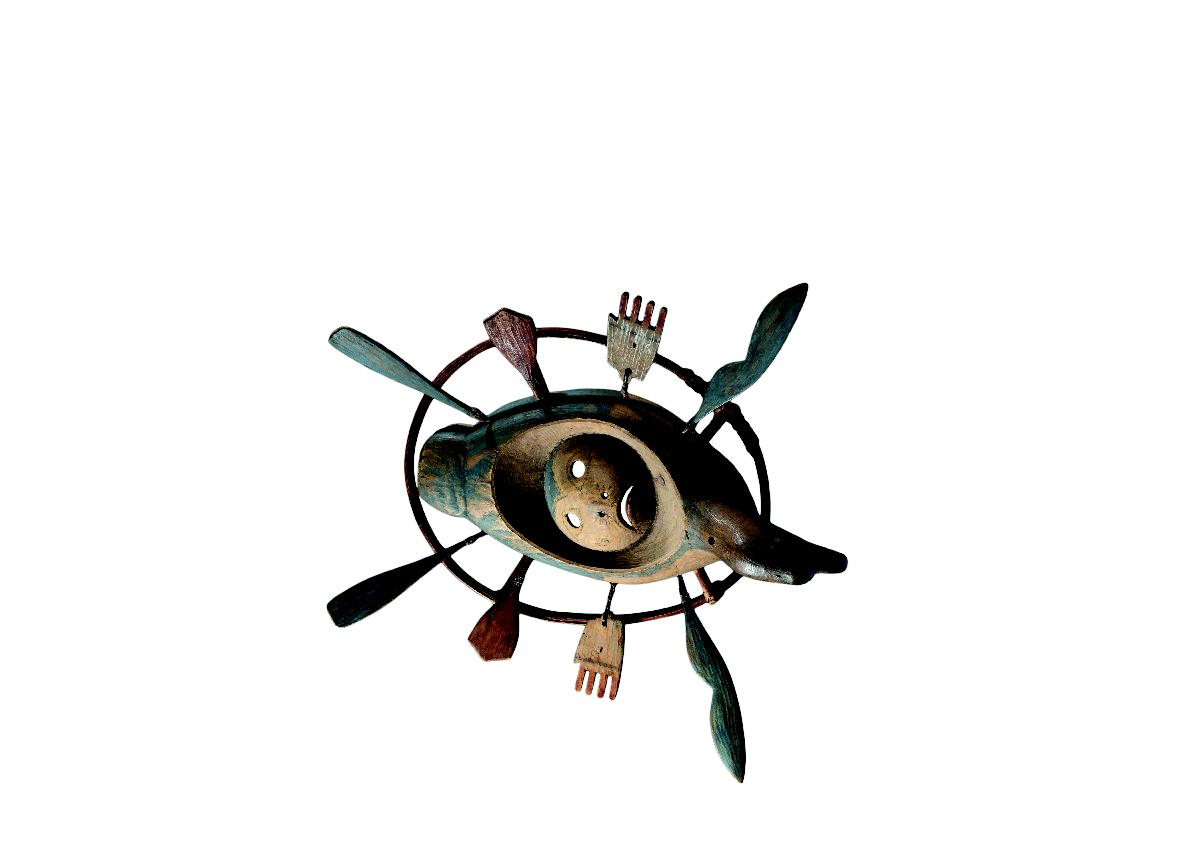
28
The Subarctic region inhabited by the Yup'ik Eskimos
in Alaska is well supplied with land and sea resources
allowing for much time that could be devoted to a full
ceremonial life. After freezeup in the winter, performance
cycles were undertaken that were important to maintaining
proper human, animal and spirit-world interactions.
Performed inside the qasaiq (communal men's house)
during festivals, dances featured masks that made visible
the world of helping spirits and extraordinary beings, and
were specially made to tell particular stories. Often used
by shamans to facilitate communication and movement
between worlds (the shamanic voyage), Yup'ik masks
were usually discarded after use.
The mask seen here is a fascinating, poetic example
of Eskimo art with dual representations a bird and a
human face, hands and flippers. It depicts the « inua »
or spirit of a bird, the guillemot, and was used during
shamanic ceremonies notably related with hunting. It is
also an allegory of the shamanic voyage during which
the shaman transformed into an animal.
This mask with an exceptional provenance (museum and
international collections) is a Surrealist manifesto in itself.
Complex Mask
Yup'ik Eskimo, Southwest Alaska
Circa 1880
Height: 48 cm 19 in.
Reportedly collected by Myrtle Ebright, a schoolteacher at Norton Sound,
Alaska, 1893-1897
Donated early 1920s to the Willis Carey Historical Museum, Cashmere, USA
Deaccessioned 1981/82
Ex collection John Hewitt, London
Ex collection George Terasaki, New York
Ex collection Merton Simpson, New York
Published: Donald Ellis Gallery, 1998
